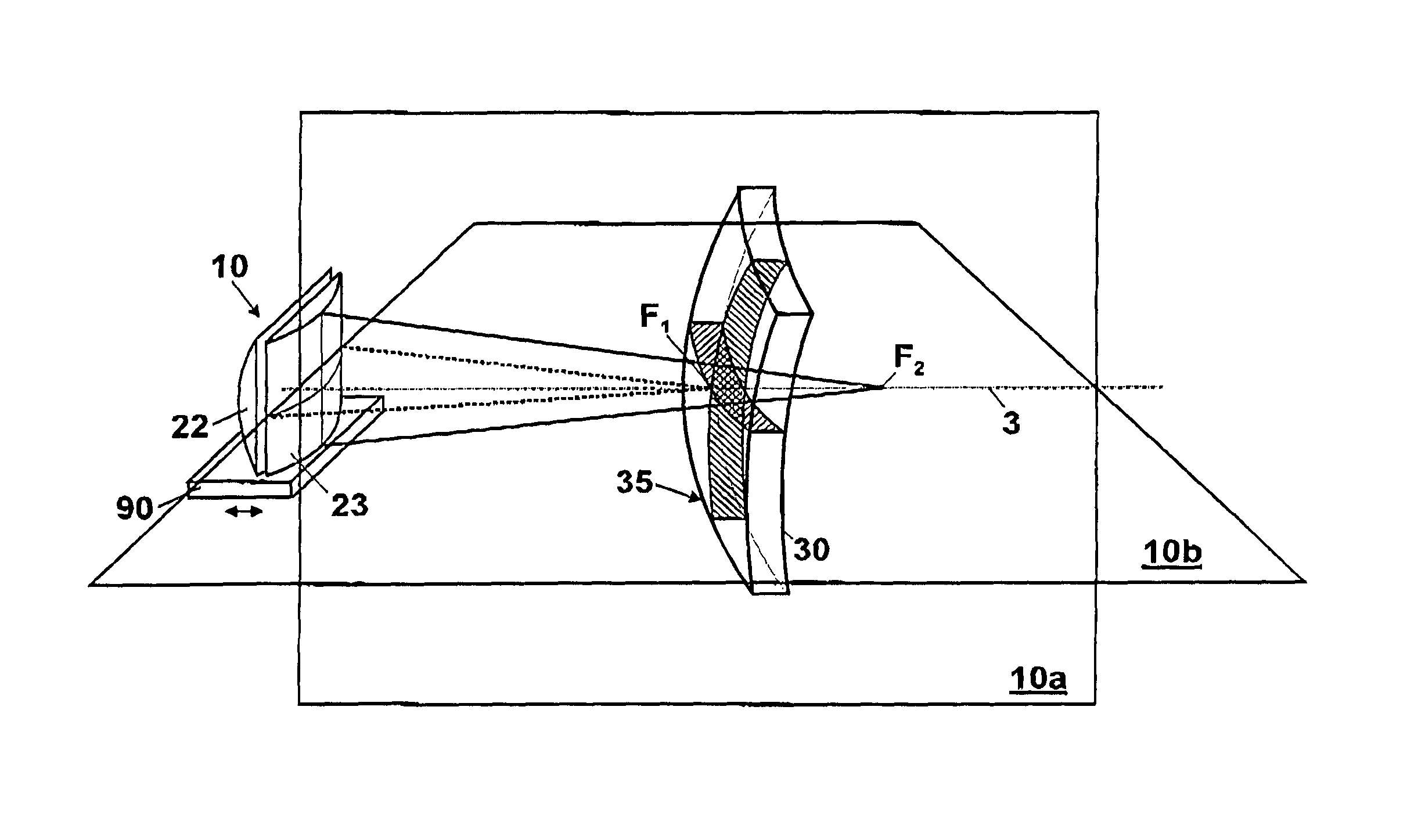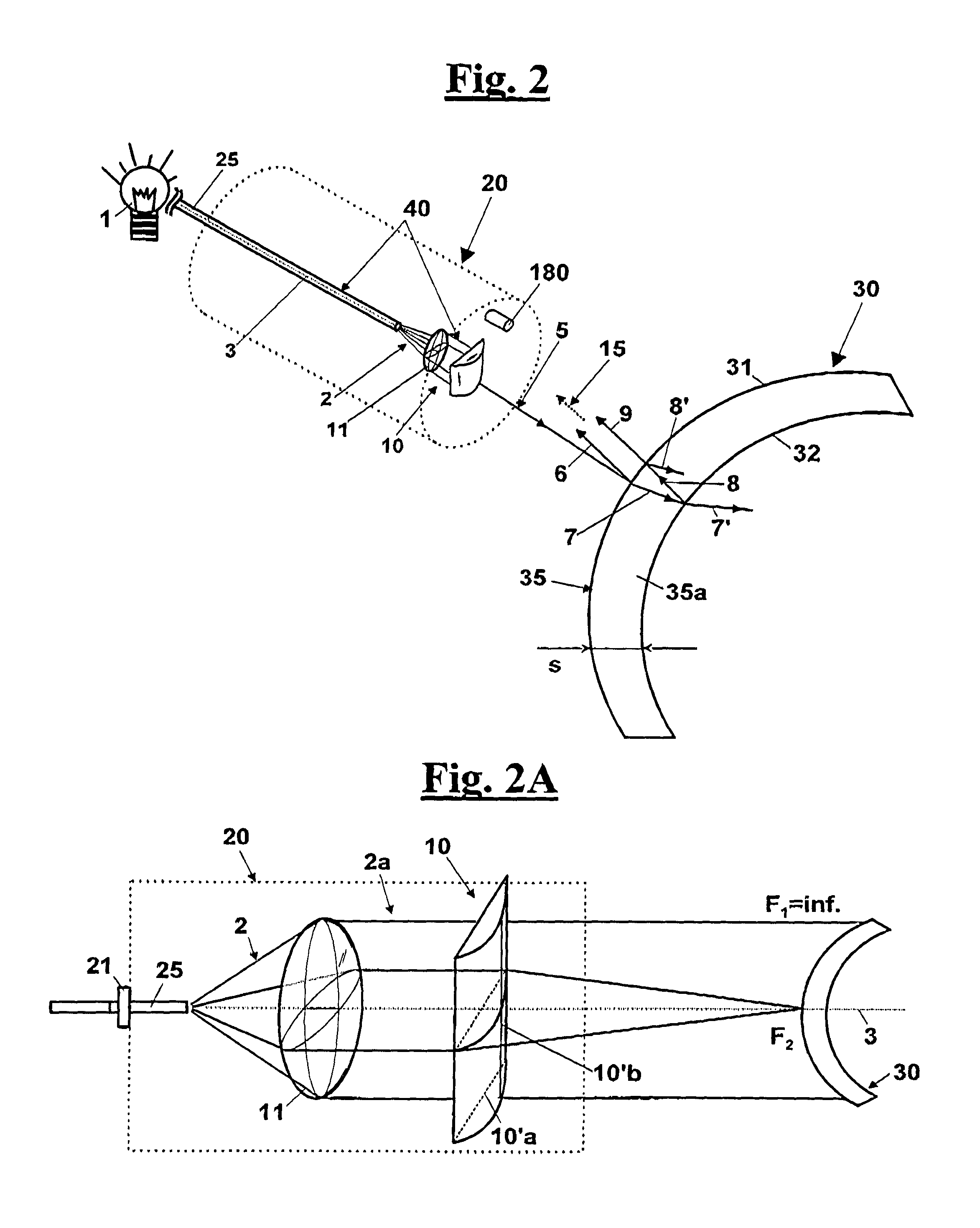Method and apparatus for measuring the thickness of a transparent object in an automatic production line
a technology of automatic production line and transparent object, which is applied in the direction of measuring devices, material analysis through optical means, instruments, etc., can solve the problems of disuniform thickness of glass tubes, affecting the quality of glass tubes, and negative consequences on the workability of final products, so as to achieve precise thickness measurement
- Summary
- Abstract
- Description
- Claims
- Application Information
AI Technical Summary
Benefits of technology
Problems solved by technology
Method used
Image
Examples
Embodiment Construction
[0131]With reference to FIG. 1, a measuring apparatus is shown for determining the thickness 100 of a wall 35 of a generic transparent object 30, in particular a curved object, that is configured to provide a relative measuring method. In particular, wall 35 comprises a transparent material 35a arranged between a proximal interface 31, set between an environment 33 and transparent material 35a, and a distal interface 32, set between transparent material 35a and the environment 33.
[0132]More in particular, the measurement apparatus for determining the thickness 100 comprises a source 1 of a starting light radiation 2 in a predetermined source direction 3 and a means for focusing 10 (FIG. 2) starting light radiation 2, in order to obtain an entering light radiation 5 directed towards wall 35.
[0133]The source 1 is for example a superluminescent diode.
[0134]More in particular, starting light radiation 2 is transmitted through an optical fibre 25, in particular a single-mode optical fibr...
PUM
| Property | Measurement | Unit |
|---|---|---|
| thickness | aaaaa | aaaaa |
| transparent | aaaaa | aaaaa |
| spectroscopic methods | aaaaa | aaaaa |
Abstract
Description
Claims
Application Information
 Login to View More
Login to View More - R&D
- Intellectual Property
- Life Sciences
- Materials
- Tech Scout
- Unparalleled Data Quality
- Higher Quality Content
- 60% Fewer Hallucinations
Browse by: Latest US Patents, China's latest patents, Technical Efficacy Thesaurus, Application Domain, Technology Topic, Popular Technical Reports.
© 2025 PatSnap. All rights reserved.Legal|Privacy policy|Modern Slavery Act Transparency Statement|Sitemap|About US| Contact US: help@patsnap.com



